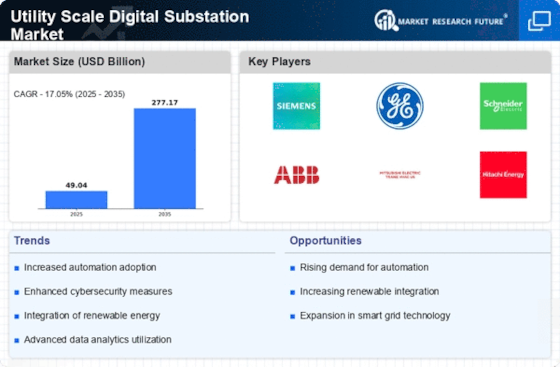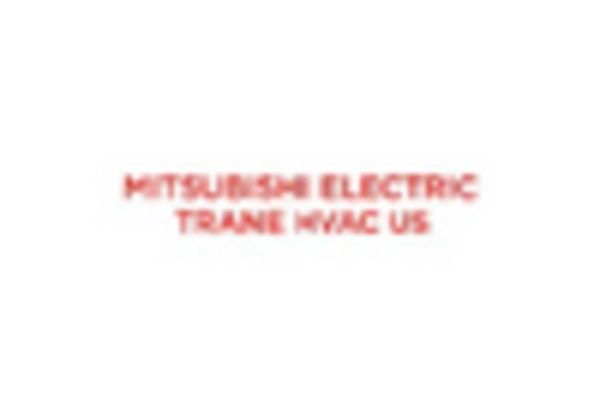The Utility Scale Digital Substation Market is currently characterized by a dynamic competitive landscape, driven by the increasing demand for efficient energy management and the integration of renewable energy sources. Key players such as Siemens (Germany), General Electric (US), and ABB (Switzerland) are at the forefront, each adopting distinct strategies to enhance their market positioning. Siemens (Germany) emphasizes innovation through its digital solutions, focusing on smart grid technologies that facilitate real-time data analytics and operational efficiency. Meanwhile, General Electric (US) is pursuing strategic partnerships to bolster its technological capabilities, particularly in the realm of digital transformation. ABB (Switzerland) is leveraging its extensive experience in automation and electrification to expand its footprint in emerging markets, thereby enhancing its competitive edge.
The business tactics employed by these companies reflect a concerted effort to optimize supply chains and localize manufacturing processes. The market structure appears moderately fragmented, with several players vying for dominance while also collaborating on various projects. This collective influence of key players fosters a competitive environment where innovation and operational efficiency are paramount.
In August 2025, Siemens (Germany) announced the launch of its new digital substation technology, which integrates advanced AI algorithms to enhance predictive maintenance capabilities. This strategic move is likely to position Siemens as a leader in the digital transformation of substations, enabling utilities to reduce downtime and improve reliability. The introduction of such cutting-edge technology underscores the company's commitment to innovation and its response to the growing demand for smarter energy solutions.
In September 2025, General Electric (US) entered into a partnership with a leading renewable energy firm to develop integrated digital substations that support the transition to a low-carbon economy. This collaboration is indicative of GE's strategy to align itself with sustainability goals while expanding its market reach. By integrating renewable energy sources into its digital substation offerings, GE is likely to enhance its competitive positioning in a market increasingly focused on sustainability.
In July 2025, ABB (Switzerland) completed the acquisition of a technology startup specializing in digital grid solutions. This acquisition is expected to bolster ABB's capabilities in providing comprehensive digital substation solutions, thereby enhancing its service offerings. The strategic importance of this move lies in ABB's ability to integrate innovative technologies into its existing portfolio, which may lead to improved operational efficiencies and customer satisfaction.
As of October 2025, the competitive trends in the Utility Scale Digital Substation Market are increasingly defined by digitalization, sustainability, and the integration of artificial intelligence. Strategic alliances among key players are shaping the landscape, fostering innovation and collaboration. Looking ahead, it appears that competitive differentiation will evolve from traditional price-based competition to a focus on technological innovation, reliability in supply chains, and the ability to meet sustainability targets. This shift may redefine how companies position themselves in the market, emphasizing the importance of advanced technologies and strategic partnerships.

















Leave a Comment